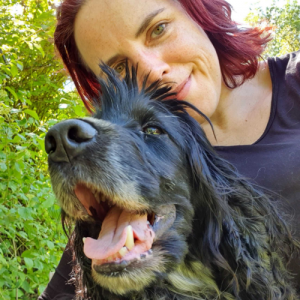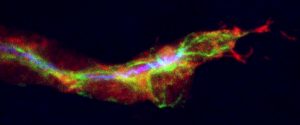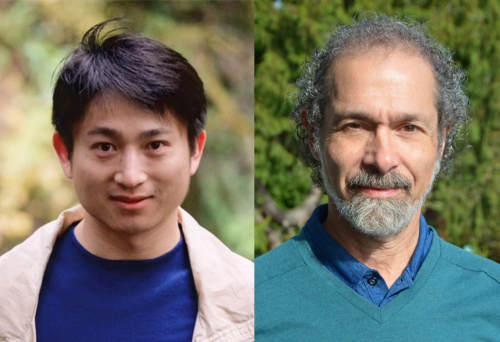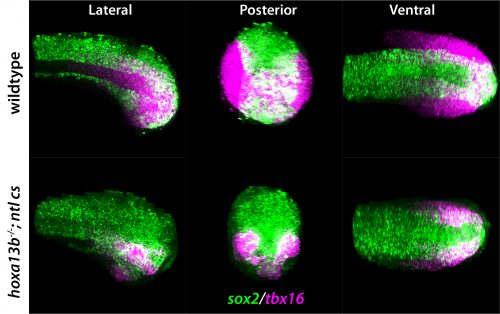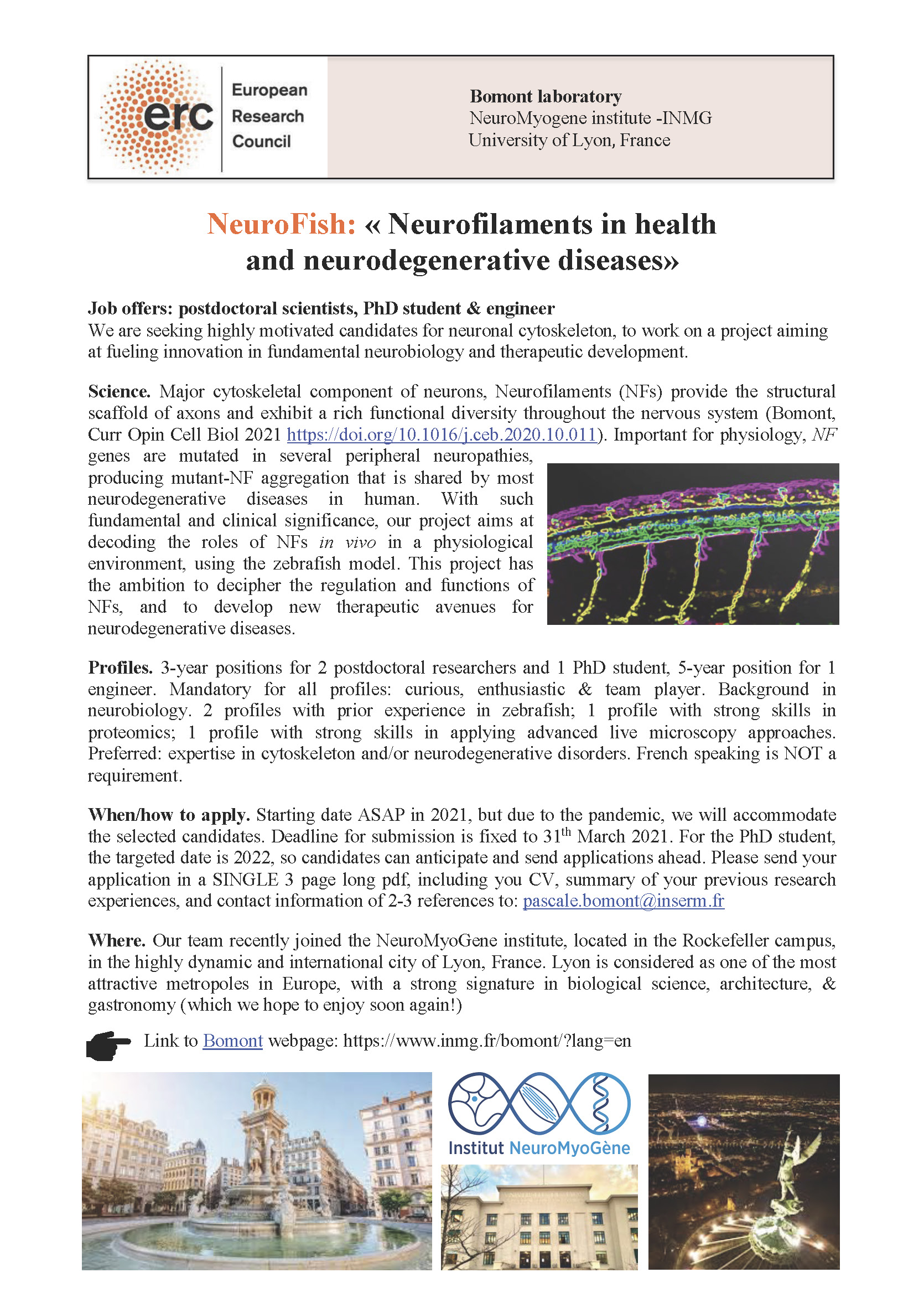February in preprints
Posted by the Node, on 1 March 2021
Welcome to our monthly trawl for developmental biology (and related) preprints.
The preprints this month are hosted on bioRxiv, arXiv and preprints.org – use these links to get to the section you want.
Developmental biology
| Stem cells, regeneration & disease modelling
Evo-devo & evo
Cell biology
Modelling
Reviews
Tools & resources
Research practice & education
Developmental biology
| Patterning & signalling
Mechanism of Interaction of BMP and Insulin Signaling in C. elegans Development and Homeostasis
James F. Clark, Emma J. Ciccarelli, Peter Kayastha, Gehan Ranepura, Muhammad S. Hasan, Alicia Melendez, Cathy Savage-Dunn
The C. elegans Notch proteins LIN-12 and GLP-1 are tuned to lower force thresholds for activation than Drosophila Notch
Paul D. Langridge, Jessica Yu Chan, Alejandro Garcia-Diaz, Iva Greenwald, Gary Struhl

Germline activity of the heat shock factor HSF-1 programs the insulin-receptor daf-2 in C. elegans
Srijit Das, Sehee Min, Veena Prahlad
A screen for Twist-interacting proteins identifies Twinstar as a regulator of muscle development during embryogenesis
Mridula Balakrishnan, Austin Howard, Shannon F. Yu, Katie Sommer, Scott J. Nowak, Mary K. Baylies
Glia-neuron signaling mediated by two different BMP ligands impacts synaptic growth
Mathieu Bartoletti, Tracy Knight, Aaron Held, Laura M. Rand, Kristi A. Wharton

Dynamics of hunchback translation in real time and at single mRNA resolution in the Drosophila embryo
Daisy J. Vinter, Caroline Hoppe, Thomas G. Minchington, Catherine Sutcliffe, Hilary L. Ashe
Blood progenitor redox homeostasis through GABA control of TCA cycle in Drosophila hematopoiesis
Manisha Goyal, Ajay Tomar, Sukanya Madhwal, Tina Mukherjee
β-importins Tnpo-SR and Cadmus and the small GTPase Ran promote ovarian cyst formation in Drosophila
Allison N. Beachum, Taylor D. Hinnant, Anna E. Williams, Amanda M. Powell, Elizabeth T. Ables
Delta C2 Domain β1-2 loop contributes to robust Notch signalling
Torcato Martins, Yao Meng, Boguslawa Korona, Richard Suckling, Steven Johnson, Penny Handford, Susan M. Lea, Sarah Bray
A developmental framework linking neurogenesis and circuit formation in the Drosophila CNS
Brandon Mark, Sen-Lin Lai, Aref Arzan Zarin, Laurina Manning, Ashok Litwin-Kumar, Albert Cardona, James W. Truman, Chris Q. Doe
Paths and Pathways that Generate Cell-Type Heterogeneity and Developmental Progression in Hematopoiesis
Juliet R. Girard, Lauren M. Goins, Dung M. Vuu, Mark S. Sharpley, Carrie M. Spratford, Shreya R. Mantri, Utpal Banerjee
Deletion of Fibroblast growth factor 9 globally and in skeletal muscle results in enlarged tuberosities at sites of deltoid tendon attachments
Connor C. Leek, Jaclyn M. Soulas, Iman Bhattacharya, Elahe Ganji, Ryan C. Locke, Megan C. Smith, Jaysheel D. Bhavsar, Shawn W. Polson, David M. Ornitz, Megan L. Killian
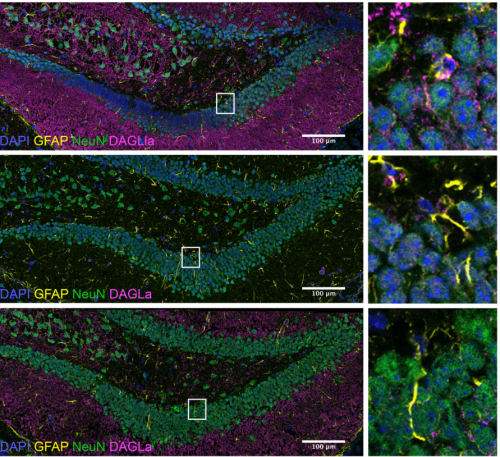
Autocrine regulation of adult neurogenesis by the endocannabinoid 2-arachidonoylglycerol (2-AG)
Lena-Louise Schuele, Britta Schürmann, Andras Bilkei-Gorzo, Andreas Zimmer, Este Leidmaa
PI3K Signaling Specifies Proximal-Distal Fate by Driving a Developmental Gene Regulatory Network in Sox9+ Lung Progenitors
Divya Khattar, Sharlene Fernandes, John Snowball, Minzhe Guo, Matthew C. Gillen, Debo
Developmental co-emergence of cardiac and gut tissues modeled by human iPSC-derived organoids
A.C. Silva, O.B. Matthys, D.A. Joy, M.A. Kauss, V. Natarajan, M.H. Lai, D. Turaga, A.P. Blair, M. Alexanian, B.G. Bruneau, T.C. McDevitt
FGF8-mediated signaling regulates tooth developmental pace and size during odontogenesis
Chensheng Lin, Ningsheng Ruan, Linjun Li, Yibin Chen, Xiaoxiao Hu, YiPing Chen, Xuefeng Hu, Yanding Zhang

Human spinal cord differentiation proceeds rapidly in vitro and only initially maintains differentiation pace in a heterologous environment
Alwyn Dady, Lindsay Davidson, Pamela A. Halley, Kate G. Storey
Dynamics of anteroposterior axis establishment in a mammalian embryo-like system
Kerim Anlaş, Nicola Gritti, David Oriola, Krisztina Arató, Fumio Nakaki, Jia Le Lim, James Sharpe, Vikas Trivedi

Neuromesodermal progenitor origin of trunk neural crest in vivo
Martyna Lukoseviciute, Sarah Mayes, Tatjana Sauka-Spengler
A signalling axis involving CNOT3, Aurora B and ERK promotes differentiation and survival of mesendodermal progenitor cells
Moumita Sarkar, Matteo Martufi, Monica Roman-Trufero, Yi-Fang Wang, Chad Whilding, Dirk Dormann, Pierangela Sabbattini, Niall Dillon
PDX1 directs a core developmentally and evolutionarily conserved gene program in the pancreatic islet
Xiaodun Yang, Jeffrey C Raum, Junil Kim, Reynold Yu, Juxiang Yang, Gabriella Rice, Changhong Li, Kyoung-Jae Won, Doris A Stoffers, Diana E Stanescu
Unique functions for Notch4 in murine embryonic lymphangiogenesis
Ajit Muley, Minji Kim Uh, Jennifer M. James, Aino Murtomaki, Joseph D. McCarron, Chris Kitajewski, Maria Gnarra, Gloria Riitano, Yoh-suke Mukouyama, Jan Kitajewski, Carrie J. Shawber
Glypiated FGF directs contact-mediated bidirectional signaling to self-regulate tissue-specific dispersion
Lijuan Du, Alex Sohr, Sougata Roy
BMP signaling interferes with optic chiasm formation and retinal ganglion cell pathfinding in zebrafish
Max D. Knickmeyer, Juan L. Mateo, Stephan Heermann
Non-cell autonomous inhibition of the Hedgehog response due to impaired cholesterol synthesis requires Ptch1/2 function
Carina Jägers, Henk Roelink
Human retinal organoids release extracellular vesicles that regulate gene expression in target human retinal progenitors
Jing Zhou, Miguel Flores-Bellver, Jianbo Pan, Alberto Benito-Martin, Cui Shi, Onyekwere Onwumere, Jason Mighty, Jiang Qian, Xiufeng Zhong, Tasmim Hogue, Baffour Amponsah-Antwi, Linda Einbond, Rajendra Gharbaran, Hao Wu, Bo-Juen Chen, Zhiliang Zheng, Tatyana Tchaikovskaya, Xusheng Zhang, Hector Peinado, Valeria Canto-Soler, Stephen Redenti
The Amyloid Precursor Protein regulates human cortical neurogenesis
Khadijeh Shabani, Julien Pigeon, Marwan Benaissa Touil Zariouh, Tengyuan Liu, Azadeh Saffarian, Jun Komatsu, Elise Liu, Natalia Danda, Ridha Limame, Delphine Bohl, Carlos Parras, Bassem A. Hassan
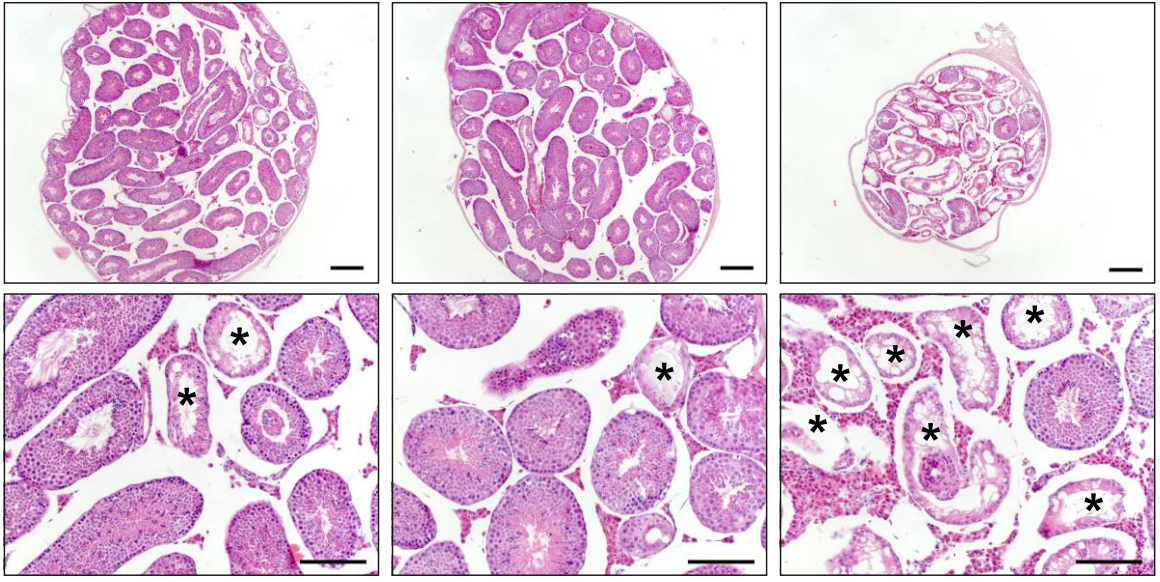
TRIM71 deficiency causes germ cell loss during mouse embryogenesis and promotes human male infertility
Lucia A. Torres-Fernández, Jana Emich, Yasmine Port, Sibylle Mitschka, Marius Wöste, Simon Schneider, Daniela Fietz, Manon S. Oud, Sara Di Persio, Nina Neuhaus, Sabine Kliesch, Michael Hölzel, Hubert Schorle, Corinna Friedrich, Frank Tüttelmann, Waldemar Kolanus
Reticulocalbin 3 is Involved in Postnatal Tendon Development by Regulating Collagen Fibrillogenesis and Cellular Maturation
Na Rae Park, Snehal Shetye, Douglas R. Keene, Sara Tufa, David M. Hudson, Marilyn Archer, Louis J Soslowsky, Nathaniel A. Dyment, Kyu Sang Joeng
Pax3 induces neural circuit repair through a developmental program of directed axon outgrowth
JS Jara, HX Avci, I Kouremenou, M Doulazmi, J Bakouche, C Dubacq, C Goyenvalle, J Mariani, AM Lohof, RM Sherrard
Two opposite voltage-dependent currents control the unusual early development pattern of embryonic Renshaw cell electrical activity
Juliette Boeri, Claude Meunier, Hervé Le Corronc, Pascal Branchereau, Yulia Timofeeva, François Xavier Lejeune, Christine Mouffle, Hervé Arulkandarajah, Jean Marie Mangin, Pascal Legendre, Antonny Czarnecki
Developmental depression-facilitation shift controls excitation-inhibition balance
David W. Jia, Rui Ponte Costa, Tim P. Vogels
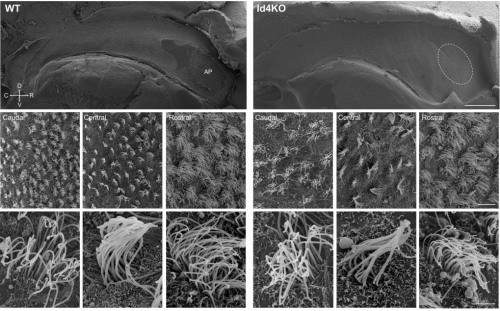
Id4 is required for normal ependymal cell development
Brenda Rocamonde, Vicente Herranz-Pérez, Jose-Manuel Garcia-Verdugo, Emmanuelle Huillard
Mitochondrial Fission Regulates Transcription of Ribosomal Protein Genes in Embryonic Hearts
Qiancong Zhao, Shun Yan, Jin Lu, Danitra J Parker, Huiying Wu, Qianchuang Sun, David Crossman, Shanrun Liu, Qin Wang, Hiromi Sesaki, Kasturi Mitra, Kexiang Liu, Kai Jiao
14-3-3ζ-depletion impairs mammary gland development in the mouse
Valentina Poltavets, Zahra Esmaeili, Sarah T. Boyle, Hayley S. Ramshaw, Angel F. Lopez, Marina Kochetkova, Michael S. Samuel
Dlc1 controls cardio-vascular development downstream of Vegfa/Kdrl/Nrp1 signaling in the zebrafish embryo
Tanja Linnerz, Julien Y. Bertrand
Generation of excitatory and inhibitory neurons from common progenitors via Notch signaling in the cerebellum
Tingting Zhang, Tengyuan Liu, Natalia Mora, Justine Guegan, Mathilde Bertrand, Ximena Contreras, And Hansen, Carmen Streicher, Marica Anderle, Luca Tiberi, Simon Hippenmeyer, Bassem A Hassan
Myelin biogenesis is associated with pathological ultrastructure that is resolved by microglia during development
Minou Djannatian, Ulrich Weikert, Shima Safaiyan, Christoph Wrede, Cassandra Deichsel, Georg Kislinger, Torben Ruhwedel, Douglas S. Campbell, Tjakko van Ham, Bettina Schmid, Jan Hegermann, Wiebke Möbius, Martina Schifferer, Mikael Simons
Hand2 delineates mesothelium progenitors and is reactivated in mesothelioma
Karin D. Prummel, Helena L. Crowell, Susan Nieuwenhuize, Eline C. Brombacher, Stephan Daetwyler, Charlotte Soneson, Jelena Kresoja-Rakic, Manuel Ronner, Agnese Kocere, Alexander Ernst, Zahra Labbaf, David E. Clouthier, Anthony B. Firulli, Héctor Sánchez-Iranzo, Sundar R. Naganathan, Rebecca O’Rourke, Erez Raz, Nadia Mercader, Alexa Burger, Emanuela Felley-Bosco, Jan Huisken, Mark D. Robinson, Christian Mosimann
The Anna Karenina model of β cell maturation in development and their dedifferentiation in type 1 and type 2 diabetes
Sutichot D. Nimkulrat, Zijian Ni, Jared Brown, Christina Kendziorski, Barak Blum
A developmental stage- and Kidins220/ARMS-dependent switch in astrocyte responsiveness to brain-derived neurotrophic factor
Fanny Jaudon, Martina Albini, Stefano Ferroni, Fabio Benfenati, Fabrizia Cesca
SDC3 acts as a timekeeper of myogenic differentiation by regulating the insulin/AKT/mTOR axis in muscle stem cell progeny
Fiona K. Jones, Alexander Phillips, Andrew R. Jones, Addolorata Pisconti

Diversity and Function of Motile Ciliated Cell Types within Ependymal Lineages of the Zebrafish Brain
Percival P. D’Gama, Tao Qiu, Mehmet Ilyas Cosacak, Yan Ling Chong, Ahsen Konac, Jan Niklas Hansen, Christa Ringers, Subhra P. Hui, Emilie W. Olstad, Chee Peng Ng, Dheeraj Rayamajhi, Dagmar Wachten, David Liebl, Kazu Kikuchi, Caghan Kizil, Emre Yaksi, Sudipto Roy, Nathalie Jurisch-Yaksi
| Morphogenesis & mechanics
Brazil Nut Effect Drives Pattern Formation in Early Mammalian Embryos
zheng guo, Jie Yao, Xu Zheng, Jialing Cao, Shuyu Guo, Dandan Qin, Zheng Gao, Min Tan, Bo Wang, Fanzhe Meng, Jing Zhang, Zai Chang, Lei Li, Jing Du, Yubo Fan
Apical contacts stemming from incomplete delamination guide progenitor cell allocation through a dragging mechanism
Eduardo Pulgar, Cornelia Schwayer, Néstor Guerrero, Loreto López, Susana Márquez, Steffen Härtel, Rodrigo Soto, Carl-Philipp Heisenberg, Miguel L. Concha
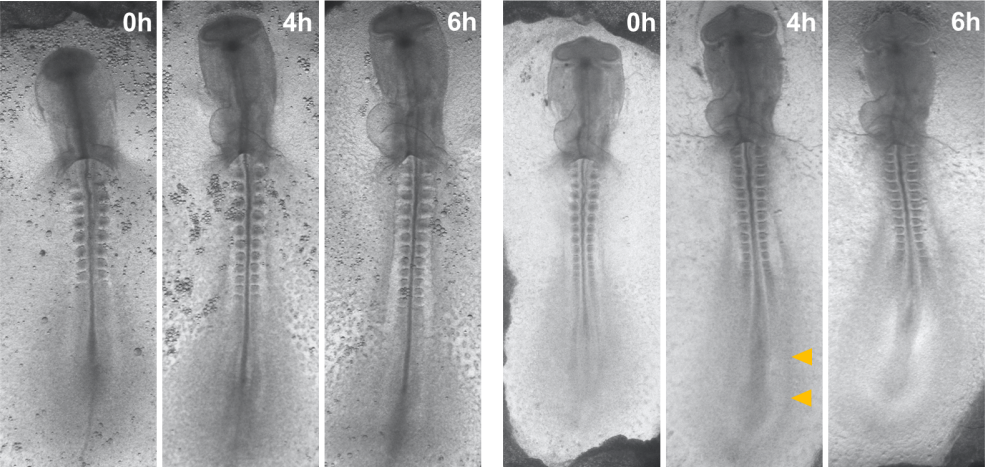
Downregulation of Extraembryonic Tension Controls Body Axis Formation in Avian Embryos
Daniele Kunz, Anfu Wang, Chon U Chan, Robyn H. Pritchard, Wenyu Wang, Filomena Gallo, Charles R. Bradshaw, Elisa Terenzani, Karin H. Müller, Yan Yan Shery Huang, Fengzhu Xiong
The Collagens DPY-17 and SQT-3 Direct Anterior-Posterior Migration of the Q Neuroblasts in C. elegans
Angelica E. Lang, Erik A. Lundquist
Using optogenetics to link myosin patterns to contractile cell behaviors during convergent extension
R. M. Herrera-Perez, C. Cupo, C. Allan, A. Lin, K. E. Kasza
Collagen polarization provides a structural memory for the elongation of epithelial anlage.
Hiroko Katsuno-Kambe, Jessica L. Teo, Robert J. Ju, James Edward Hudson, Samantha J. Stehbens, Alpha S. Yap
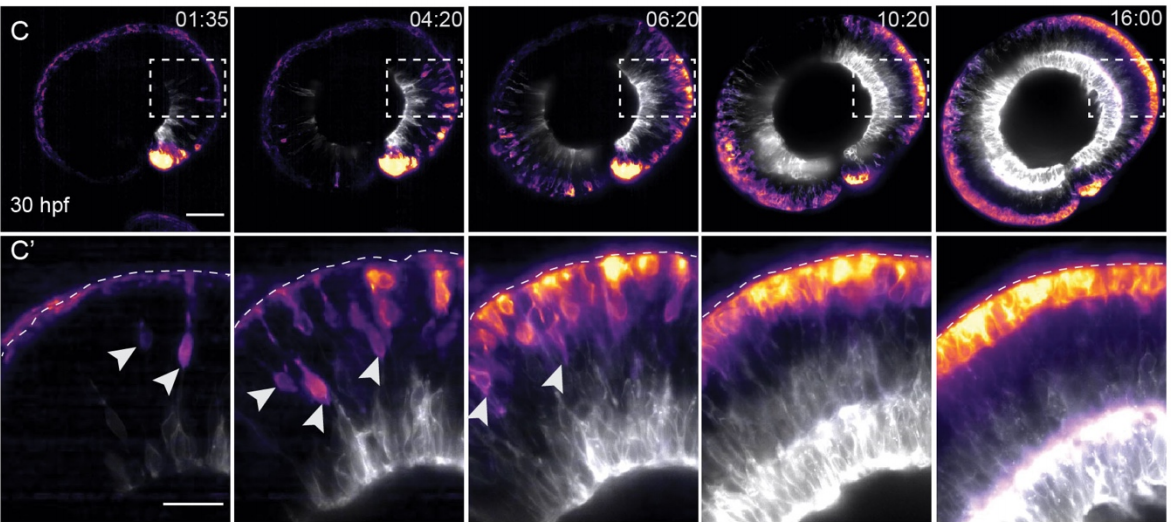
Bidirectional neuronal migration coordinates retinal morphogenesis by preventing spatial competition
Mauricio Rocha-Martins, Jenny Kretzschmar, Elisa Nerli, Martin Weigert, Jaroslav Icha, Eugene W. Myers, Caren Norden
Tacc3 modulates microtubule network dynamicity and focal adhesion remodeling to affect cranial neural crest cell migration in Xenopus laevis
Elizabeth A. Bearce, Benjamin Pratt, Erin Rutherford, Leslie Carandang, Laura Anne Lowery
Multiple PDZ Domain Protein Maintains Patterning of the Apical Cytoskeleton in Sensory Hair Cells
Amandine Jarysta, Basile Tarchini
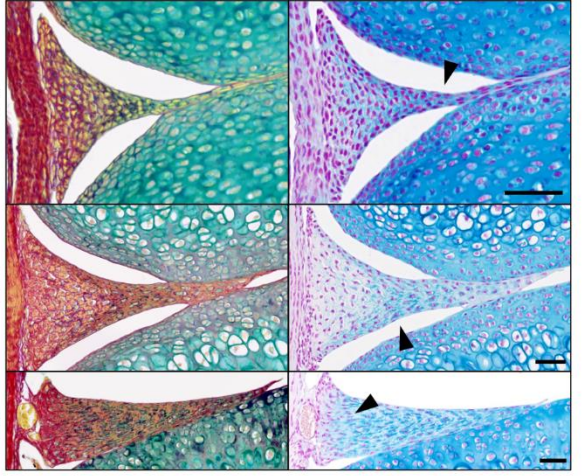
Intrinsic and growth-mediated cell and matrix specialization during meniscus tissue assembly
Tonia K. Tsinman, Xi Jiang, Lin Han, Eiki Koyama, Robert L. Mauck, Nathaniel A. Dyment
Supracellular organization confers directionality and mechanical potency to migrating pairs of cardiopharyngeal progenitor cells
Yelena Y Bernadskaya, Haicen Yue, Calina Copos, Lionel Christiaen, Alex Mogilner
Osmolarity-regulated swelling initiates egg activation in Drosophila
Anna H. York-Andersen, Benjamin W. Wood, Elise L. Wilby, Alexander S. Berry, Timothy T. Weil
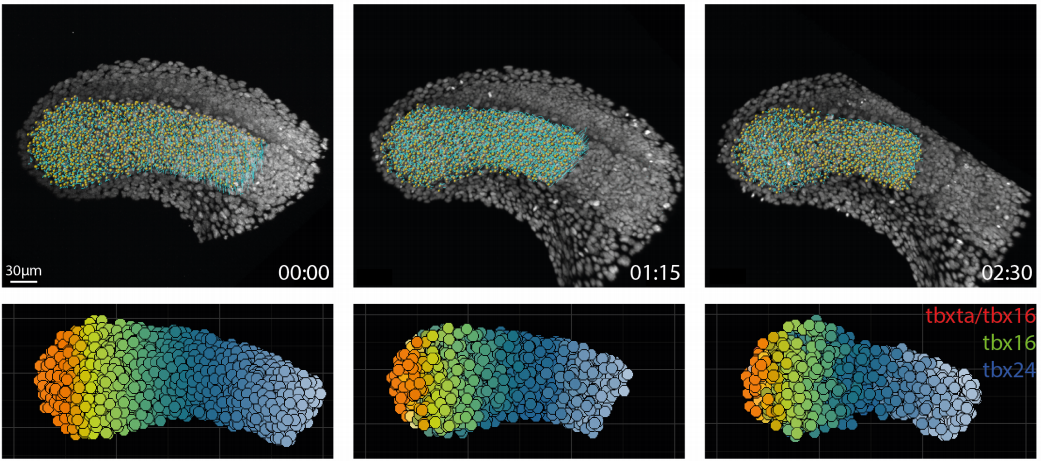
Morphogenetic coupling leads to pattern emergence in the presomitic mesoderm
Timothy Fulton, Seongwon Hwang, Yuxuan Wang, Lewis Thomson, Bethan Clark, Berta Verd, Benjamin Steventon
Development of the entorhinal cortex occurs via parallel lamination during neurogenesis
Yong Liu, Tobias Bergmann, Yuki Mori, Juan Miguel Peralvo Vidal, Maria Pihl, Navneet A Vasistha, Preben Dybdahl Thomsen, Stefan E Seemann, Jan Gorodkin, Poul Hyttel, Konstantin Khodosevich, Menno P Witter, Vanessa Jane Hall
Mask, the Drosophila Ankyrin Repeat and KH domain-containing protein, regulates microtubule dynamics
Daniel Martinez, Mingwei Zhu, Jessie J. Guidry, Niles Majeste, Hui Mao, Sarah Yanofsky, Xiaolin Tian, Chunlai Wu

Condensation of the Drosophila Nerve Cord is Oscillatory and depends on Coordinated Mechanical Interactions
Katerina Karkali, Prabhat Tiwari, Anand Singh, Sham Tlili, Ignasi Jorba, Daniel Navajas, José J. Muñoz, Timothy E. Saunders, Enrique Martin-Blanco
GATA3 is essential for separating patterning domains during facial morphogenesis
Makoto Abe, Anthony B. Firulli, Stanley M. Kanai, Kim-Chew Lim, J Douglas Engel, David E. Clouthier
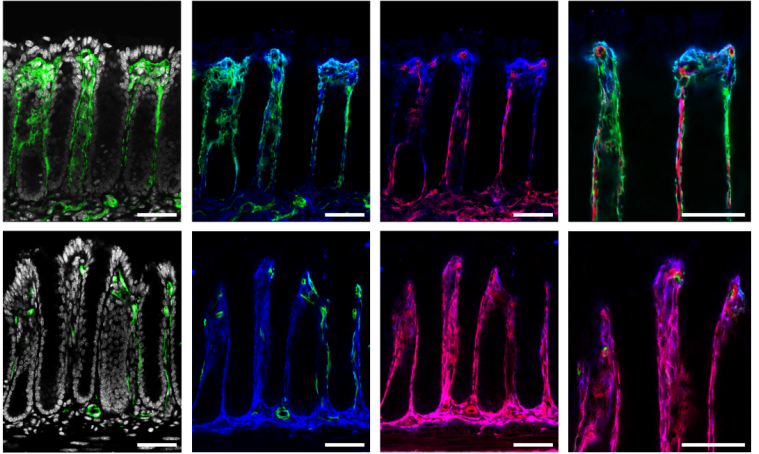
Col6a1+/CD201+ telocytes regulate intestinal morphogenesis and homeostasis
Maria-Theodora Melissari, Ana Henriques, Christos Tzaferis, Alejandro Prados, Michalis E. Sarris, Panagiotis Chouvardas, Sofia Grammenoudi, George Kollias, Vasiliki Koliaraki
Proteolysis of fibrillin-2 microfibrils is essential for normal skeletal development
Timothy J. Mead, Daniel R. Martin, Lauren W. Wang, Stuart A. Cain, Cagri Gulec, Elisabeth Cahill, Joseph Mauch, Dieter P. Reinhardt, Cecilia W. Lo, Clair Baldock, Suneel S. Apte
3D viscoelastic drag forces drive changes to cell shapes during organogenesis in the zebrafish embryo
Paula C. Sanematsu, Gonca Erdemci-Tandogan, Himani Patel, Emma M. Retzlaff, Jeffrey D. Amack, M. Lisa Manning
Mechanically Sensitive HSF1 is a Key Regulator of Left-Right Symmetry Breaking in Zebrafish Embryos
Jing Du, Shu-Kai Li, Liu-Yuan Guan, Zheng Guo, Jiang-Fan Yin, Li Gao, Toru Kawanishi, Atsuko Shimada, Qiu-Ping Zhang, Li-Sha Zheng, Yi-Yao Liu, Xi-Qiao Feng, Dong-Yan Chen, Hiroyuki Takeda, Yu-Bo Fan
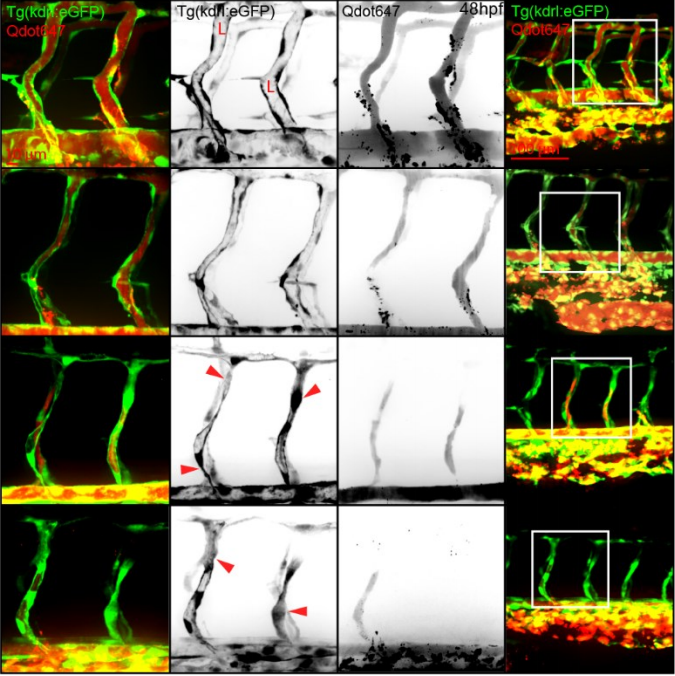
Synaptotagmin-like protein 2a regulates lumen formation via Weibel-Palade body apical secretion of angiopoietin-2 during angiogenesis
Caitlin R. Francis, Shea Claflin, Erich J. Kushner
Electrostatic Plasma Membrane Targeting Contributes to Dlg Function in Cell Polarity and Tumorigenesis
Juan Lu, Wei Dong, Yan Tao, Yang Hong
Anisotropic expansion of hepatocyte lumina enforced by apical bulkheads
Lenka Belicova, Urska Repnik, Julien Delpierre, Elzbieta Gralinska, Sarah Seifert, José Ignacio Valenzuela, Hernán Andrés Morales-Navarrete, Christian Franke, Helin Räägel, Evgeniya Shcherbinina, Tatiana Prikazchikova, Victor Koteliansky, Martin Vingron, Yannis Kalaidzidis, Timofei Zatsepin, Marino Zerial
Parallel Rap1>RalGEF>Ral and Ras signals sculpt the C. elegans nervous system
Jacob I. Mardick, Neal R. Rasmussen, Bruce Wightman, David J. Reiner
Investigating Primary Cilia during Peripheral Nervous System Formation
Elkhan Yusifov , Alexandre Dumoulin ORCID logo , Esther T. Stoeckli
Autonomous epithelial folding induced by an intracellular mechano-polarity feedback loop
Fu-Lai Wen, Chun Wai Kwan, Yu-Chiun Wang, Tatsuo Shibata
The Pebble/Rho1/Anillin pathway controls polyploidization and axonal wrapping activity in the glial cells of the Drosophila eye
Lígia Tavares, Patrícia Grácio, Raquel Ramos, Rui Traquete, João B. Relvas, Paulo S. Pereira
Cell-extracellular matrix interactions in the fluidic phase direct the topology and polarity of self-organized epithelial structures
Mingxing Ouyang, Jiun-Yann Yu, Yenyu Chen, Linhong Deng, Chin-Lin Guo
| Genes & genomes
Translesion DNA synthesis-driven mutagenesis in very early embryogenesis of fast cleaving embryos
Elena Lo Furno, Isabelle Busseau, Claudio Lorenzi, Cima Saghira, Stephan Zuchner, Domenico Maiorano
Genetic effects on brain traits impact cell-type specific gene regulation during neurogenesis
Nil Aygün, Angela L. Elwell, Dan Liang, Michael J. Lafferty, Kerry E. Cheek, Kenan P. Courtney, Jessica Mory, Ellie Hadden-Ford, Oleh Krupa, Luis de la Torre-Ubieta, Daniel H. Geschwind, Michael I. Love, Jason L. Stein
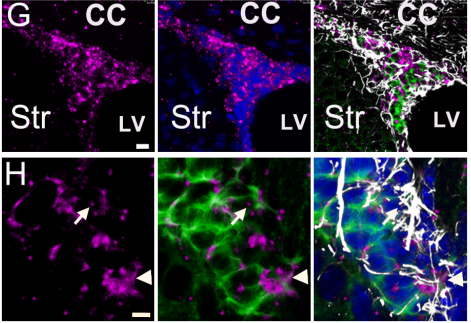
Single-cell analysis of the ventricular-subventricular zone reveals signatures of dorsal and ventral adult neurogenic lineages
Stephanie A Redmond, Arantxa Cebrian Silla, Marcos Assis Nascimento, Benjamin Mansky, David Wu, Kirsten Obernier, Ricardo Romero Rodriguez, Daniel A Lim, Arturo Alvarez-Buylla
Single-cell analysis identifies a key role for Hhip in murine coronal suture development
Greg Holmes, Ana S Gonzalez-Reiche, Madrikha Saturne, Xianxiao Zhou, Ana C Borges, Bhavana Shewale, Bin Zhang, Harm van Bakel, Ethylin Wang Jabs
The developing mouse coronal suture at single-cell resolution
D’Juan T. Farmer, Hana Mlcochova, Yan Zhou, Nils Koelling, Guanlin Wang, Neil Ashley, Robert E Maxson Jr., Andrew O. M. Wilkie, J Gage Crump, Stephen R.F. Twigg
A single cell atlas of human teeth
Pierfrancesco Pagella, Laura de Vargas Roditi, Bernd Stadlinger, Andreas E. Moor, Thimios A. Mitsiadis
Comprehensive evaluation of ACE2 expression in female ovary by single-cell RNA-seq analysis
Siming Kong, Zhiqiang Yan, Peng Yuan, Xixi Liu, Yidong Chen, Ming Yang, Wei Chen, Shi Song, Jie Yan, Liying Yan, Jie Qiao
Single cell trajectory analysis of human pluripotent stem cells differentiating towards lung and hepatocyte progenitors
Chaido Ori, Meshal Ansari, Ilias Angelidis, Fabian J. Theis, Herbert B. Schiller, Micha Drukker
Long noncoding RNA VENTHEART is required for cardiomyocyte specification and function
Albert Dashi, Wilson L.W. Tan, Chukwuemeka George Anene-Nzelu, Bangfen Pan, Autio Matias Ilmari, Zenia Tiang, Robin J.G. Hartman, Justus Stenzig, Heming Wei, Chen Gao Bin, Matthew Andrew Ackers-Johnson, Bing Lim, Anna Walentinsson, Vidhya Vardharajan Iyer, Malin K.B. Jonsson, Roger S. Foo
Specification of axial identity by Hoxa2 distinguishes between a phenotypic and molecular ground state in mouse cranial neural crest cells
Irina Pushel, Paul A Trainor, Robb Krumlauf
CONTEXT-INDEPENDENT FUNCTION OF A CHROMATIN BOUNDARY IN VIVO
Andrea Willemin, Lucille Lopez-Delisle, Christopher Chase Bolt, Marie-Laure Gadolini, Denis Duboule, Edgardo Rodriguez-Carballo
The anterior Hox gene ceh-13 and elt-1/GATA activate the posterior Hox genes nob-1 and php-3 to specify posterior lineages in the C. elegans embryo
John Isaac Murray, Elicia Preston, Jeremy P. Crawford, Jonathan D. Rumley, Prativa Amom, Breana D. Anderson, Priya Sivaramakrishnan, Shaili D. Patel, Barrington Alexander Bennett, Teddy D. Lavon, Felicia Peng, Amanda L. Zacharias
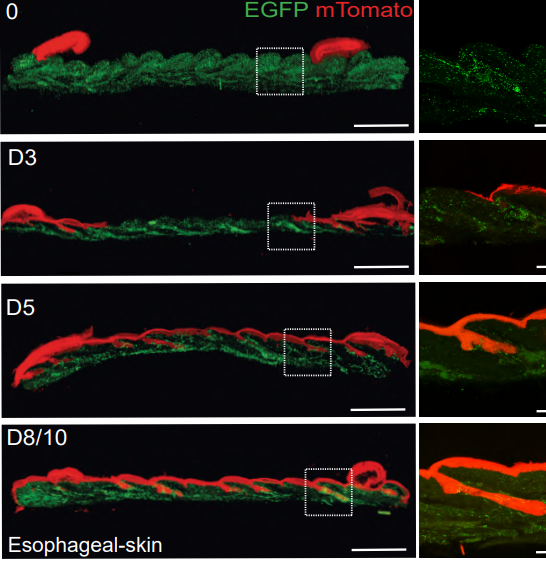
Defining the transcriptional signature of esophageal-to-skin lineage conversion
Maria T. Bejar, Paula Jimenez-Gomez, Ilias Moutsopoulos, Bartomeu Colom, Seungmin Han, Fernando J Calero-Nieto, Berthold Göttgens, Irina Mohorianu, Benjamin D. Simons, Maria P. Alcolea
AF10 (MLLT10) prevents somatic cell reprogramming through regulation of DOT1L-mediated H3K79 methylation
Deniz Uğurlu-Çimen, Deniz Odluyurt, Kenan Sevinç, Nazlı Ezgi Özkan-Küçük, Burcu Özçimen, Deniz Demirtaş, Eray Enüstün, Can Aztekin, Martin Philpott, Udo Oppermann, Nurhan Özlü, Tamer T. Önder
The epigenetic eraser LSD1 lies at the apex of a reversible erythroid to myeloid cell fate decision
Lei Yu, Greggory Myers, Chia-Jui Ku, Emily Schneider, Yu Wang, Sharon A. Singh, Natee Jearawiriyapaisarn, Andrew White, Takashi Moriguchi, Rami Khoriaty, Masayuki Yamamoto, M. Geoffrey Rosenfeld, Julien Pedron, John H. Bushweller, Kim-Chew Lim, James Douglas Engel
CHD4-NURD controls mouse neonate spermatogonia survival
Rodrigo O. de Castro, Victor Goitea, Luciana Previato, Agustin Carbajal, Courtney T. Griffin, Roberto J. Pezza
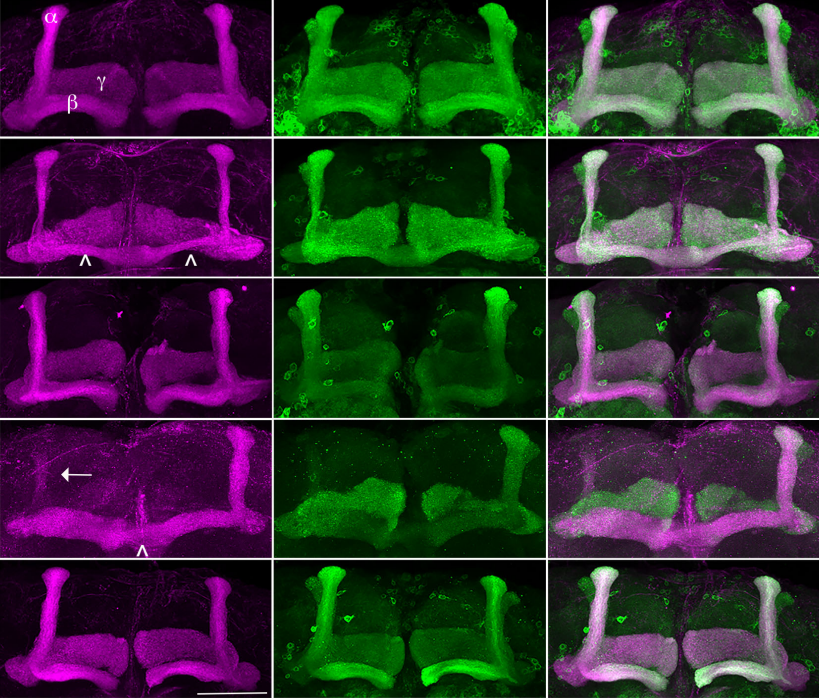
Increased abundance of nuclear HDAC4 impairs neuronal development and long-term memory
Patrick Main, Wei Jun Tan, David Wheeler, Helen L Fitzsimons
Comparison analysis on transcriptomic of different human trophoblast development model
Yajun Liu, Yilin Guo, Ya Gao, Guiming Hu, Jingli Ren, Jun Ma, Jinquan Cui
X chromosome-dependent disruption of placental regulatory networks in hybrid dwarf hamsters
Thomas D Brekke, Emily C Moore, Shane C Campbell-Staton, Colin M Callahan, Zachary A Cheviron, Jeffrey M Good
Single-cell RNA-sequencing reveals pre-meiotic X-chromosome dosage compensation in Drosophila testis
Evan Witt, Zhantao Shao, Chun Hu, Henry M. Krause, Li Zhao
Transcriptomic and genetic analyses identify the Krüppel-like factor dar1 as a master regulator of tube-shaped long tendon development
Laurichesse Quentin, Moucaud Blandine, Jagla Krzysztof, Soler Cédric
| Stem cells, regeneration & disease modelling
POGZ controls embryonic stem cell self-renewal and pluripotency by association with esBAF and HP1
Xiaoyun Sun, Linxi Cheng, Yuhua Sun
Sox2 controls neural stem cell self-renewal through a Fos-centered gene regulatory network
Miriam Pagin, Mattias Pernebrink, Simone Giubbolini, Cristiana Barone, Gaia Sambruni, Yanfen Zhu, Matteo Chiara, Sergio Ottolenghi, Giulio Pavesi, Chia-Lin Wei, Claudio Cantù, Silvia K. Nicolis
Dichotomous regulation of lysosomes by MYC and TFEB controls hematopoietic stem cell fate
Laura García-Prat, Kerstin B. Kaufmann, Florin Schneiter, Veronique Voisin, Alex Murison, Jocelyn Chen, Michelle Chan-Seng-Yue, Olga I. Gan, Jessica L. McLeod, Sabrina A. Smith, Michelle C. Shoong, Darrien Paris, Kristele Pan, Andy G.X. Zeng, Gabriela Krivdova, Kinam Gupta, Shin-Ichiro Takayanagi, Elvin Wagenblast, Weijia Wang, Mathieu Lupien, Timm Schroeder, Stephanie Z. Xie, John E. Dick
The cohesin regulator Stag1 promotes cell plasticity through heterochromatin regulation
Dubravka Pezic, Sam Weeks, Wazeer Varsally, Pooran S. Dewari, Steven Pollard, Miguel R. Branco, Suzana Hadjur
HES1 protein oscillations are necessary for neural stem cells to exit from quiescence
Elli Marinopoulou, Nitin Sabherwal, Veronica Biga, Jayni Desai, Antony D. Adamson, Nancy Papalopulu
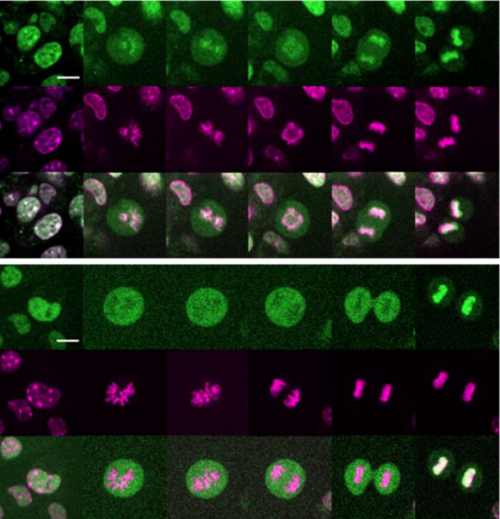
Hierarchical reactivation of transcription during mitosis-to-G1 transition by Brn2 and Ascl1 in neural stem cells
Mário A. F. Soares, Diogo S. Soares, Vera Teixeira, Raul Bardini Bressan, Steven M. Pollard, Raquel A. Oliveira, Diogo S. Castro
Coordinate transcriptional and post-transcriptional repression of pro-differentiation genes maintains intestinal stem cell identity
Kasun Buddika, Yi-Ting Huang, Ishara S. Ariyapala, Alex Butrum- Griffith, Sam A. Norrell, Alex M. O’Connor, Viraj K. Patel, Samuel A. Rector, Mark Slovan, Mallory Sokolowski, Yasuko Kato, Akira Nakamura, Nicholas S. Sokol
The differentiation of pluripotent stem cells towards transplantable endothelial progenitor cells
Kezhou Qin, Jun Yang
Overlapping roles of JIP3 and JIP4 in promoting axonal transport of lysosomes in human iPSC-derived neurons
Swetha Gowrishankar, Lila Lyons, Nisha Mohd Rafiq, Agnes Roczniak-Ferguson, Pietro De Camilli, Shawn M. Ferguson
Pluripotent stem cell SOX9 and INS reporters facilitate differentiation into insulin-producing cells
Rabea Dettmer, Isabell Niwolik, Ilir Mehmeti, Anne Jörns, Ortwin Naujok
The ETS Transcription Factor ERF controls the exit from the naïve pluripotent state
M. Vega-Sendino, T. Olbrich, D. Tillo, A. D. Tran, C. N. Domingo, M. Franco, P. C. FitzGerald, M. J. Kruhlak, S. Ruiz
Functional Expression of Choline Transporters in Human Neural Stem Cells and Its Link to Cell Proliferation, Cell Viability, and Neurite Outgrowth
Yosuke Fujita, Tomoki Nagakura , Hiroyuki Uchino , Masato Inazu, Tsuyoshi Yamanaka
SIRT1 regulates sphingolipid metabolism and neural differentiation of mouse embryonic stem cells through c-Myc- SMPDL3B
Wei Fan, Shuang Tang, Xiaojuan Fan, Yi Fang, Xiaojiang Xu, Leping Li, Jian Xu, Jian-Liang Li, Zefeng Wang, Xiaoling Li
DLL4 and PDGF-BB regulate migration of human iPSC-derived skeletal myogenic progenitors
Giulia Ferrari, SungWoo Choi, Louise Anne Moyle, Kirsty Mackinlay, Naira Naouar, Christine Wells, Francesco Muntoni, Francesco Saverio Tedesco
Cyclophilin A regulates protein phase separation and mitigates haematopoietic stem cell aging
Laure Maneix, Polina Iakova, Shannon E. Moree, Jordon C.K. King, David B. Sykes, Cedric T. Hill, Borja Saez, Eric Spooner, Daniela S. Krause, Ergun Sahin, Bradford C. Berk, David T. Scadden, André Catic
TPX2 Amplification-Driven Aberrant Mitosis in Long-Term Cultured Human Embryonic Stem Cells
Ho-Chang Jeong, Young-Hyun Go, Joong-Gon Shin, Yun-Jeong Kim, Min-Guk Cho, Dasom Gwon, Hyun Sub Cheong, Haeseung Lee, Jae-Ho Lee, Chang-Young Jang, Hyoung Doo Shin, Hyuk-Jin Cha
Reduction of HDAC2 expression in human induced pluripotent stem cell derived neurons improves neuronal maturation, mitochondrial dynamics and cellular neurodegenerative disease phenotypes
Harald Frankowski, Fred Yeboah, Bonnie J. Berry, Chizuru Kinoshita, Michelle Lee, Kira Evitts, Joshua Davis, Yoshito Kinoshita, Richard S. Morrison, Jessica E. Young
Novel newt regeneration genes regulate Wingless signaling to restore patterning in Drosophila eye
Abijeet Singh Mehta, Prajakta Deshpande, Anuradha Venkatakrishnan Chimata, Amit Singh
Physically interacting beta-delta pairs in the regenerating pancreas revealed by single-cell sequencing
Eran Yanowski, Nancy-Sarah Yacovzada, Eyal David, Amir Giladi, Diego Jaitin, Lydia Farack, Adi Egozi, Danny Ben-Zvi, Shalev Itzkovitz, Ido Amit, Eran Hornstein
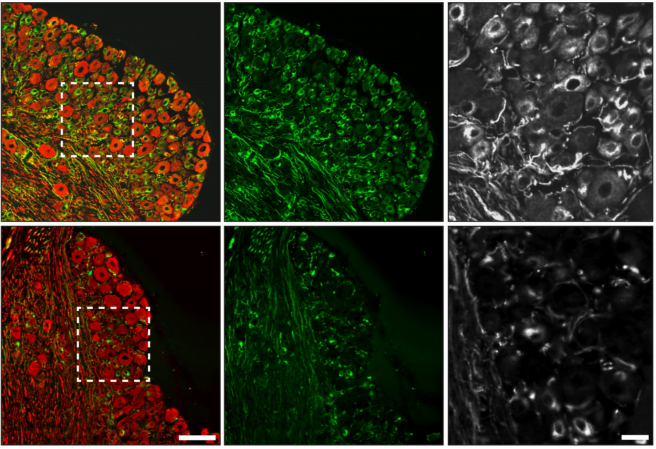
Promoting axon regeneration by enhancing the non-coding function of the injury-responsive coding gene Gpr151
Bohm Lee, Jinyoung Lee, Yewon Jeon, Hyemin Kim, Minjae Kwon, Jung Eun Shin, Yongcheol Cho
Tig1 regulates proximo-distal identity during salamander limb regeneration
Catarina R. Oliveira, Dunja Knapp, Ahmed Elewa, Sandra G. Gonzalez Malagon, Phillip B. Gates, Andreas Petzhold, Hernan Arce, Rodrigo C. Cordoba, Osvaldo Chara, Elly M. Tanaka, Andras Simon, Maximina H. Yun
Altered TGFB1 regulated pathways promote accelerated tendon healing in the superhealer MRL/MpJ mouse
Jacob G. Kallenbach, Margaret A. T. Freeberg, David Abplanalp, Jacquelyn A. Myers, John M. Ashton, Alayna Loiselle, Mark R. Buckley, Andre J. van Wijnen, Hani A. Awad
Midkine-a regulates the formation of a fibrotic scar during zebrafish heart regeneration
Dimitrios Grivas, Álvaro González-Rajal, José Luis de la Pompa
Dendrimer-targeted immunosuppression of microglia reactivity super-accelerates photoreceptor regeneration kinetics in the zebrafish retina
Kevin B. Emmerich, David T. White, Siva P. Kambhampati, Grace Y. Lee, Tian-Ming Fu, Arpan Sahoo, Meera T. Saxena, Eric Betzig, Rangaramanujam M. Kannan, Jeff S. Mumm
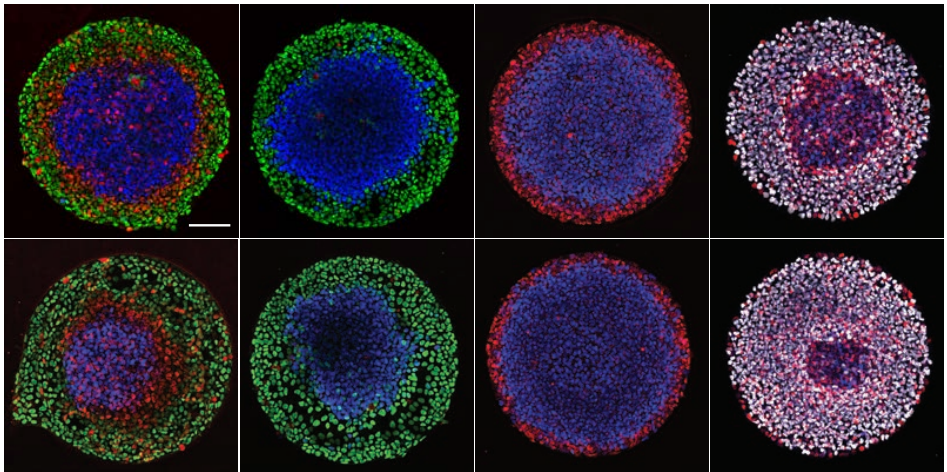
Huntingtin CAG expansion impairs germ layer patterning in synthetic human gastruloids through polarity defects
Szilvia Galgoczi, Albert Ruzo, Christian Markopoulos, Anna Yoney, Tien Phan-Everson, Tomomi Haremaki, Jakob J. Metzger, Fred Etoc, Ali H. Brivanlou
Phenotypic analysis of catastrophic childhood epilepsy genes: The Epilepsy Zebrafish Project
Aliesha Griffin, Colleen Carpenter, Jing Liu, Rosalia Paterno, Brian Grone, Kyla Hamling, Maia Moog, Matthew T. Dinday, Francisco Figueroa, Mana Anvar, Chinwendu Ononuju, Tony Qu, Scott C. Baraban
Modeling autism-associated SHANK3 deficiency using human cortico-striatal organoids generated from single neural rosettes
Yueqi Wang, Simone Chiola, Guang Yang, Chad Russell, Celeste J. Armstrong, Yuanyuan Wu, Jay Spampanato, Paisley Tarboton, Amelia N. Chang, David A. Harmin, Elena Vezzoli, Dario Besusso, Jun Cui, Elena Cattaneo, Jan Kubanek, Aleksandr Shcheglovitov
Drosophila functional screening of de novo variants in autism uncovers deleterious variants and facilitates discovery of rare neurodevelopmental diseases
Paul C Marcogliese, Samantha L Deal, Jonathan Andrews, J Michael Harnish, V Hemanjani Bhavana, Hillary K Graves, Sharayu Jangam, Xi Luo, Ning Liu, Danqing Bei, Yu-Hsin Chao, Brooke Hull, Pei-Tseng Lee, Hongling Pan, Colleen M Longley, Hsiao-Tuan Chao, Hyunglok Chung, Nele A Haelterman, Oguz Kanca, Sathiya N Manivannan, Linda Z Rossetti, Amanda Gerard, Eva Maria Christina Schwaibold, Renzo Guerrini, Annalisa Vetro, Eleina England, Chaya N Murali, Tahsin Stefan Barakat, Marieke F van Dooren, Martina Wilke, Marjon van Slegtenhorst, Gaetan Lesca, Isabelle Sabatier, Nicolas Chatron, Catherine A Brownstein, Jill A Madden, Pankaj B Agrawal, Roberto Keller, Lisa Pavinato, Alfredo Brusco, Jill A Rosenfeld, Ronit Marom, Michael F Wangler, Shinya Yamamoto
Glutamatergic dysfunction precedes neuron loss in cerebral organoids with MAPT mutation
Kathryn R. Bowles, M. Catarina Silva, Kristen Whitney, Taylor Bertucci, Jacob C. Garza, Nathan C. Boles, Kevin H. Strang, Sidhartha Mahali, Jacob A. Marsh, Cynthia Chen, Derian A. Pugh, Yiyuan Liu, Joshua E. Berlind, Jesse D. Lai, Susan K. Goderie, Rebecca Chowdhury, Steven Lotz, Keith Lane, Khadijah Onanuga, Celeste M. Karch, Justin K. Ichida, John F. Crary, Stephen J. Haggarty, Alison M. Goate, Sally Temple
Using induced pluripotent stem cells to investigate human neuronal phenotypes in 1q21.1 deletion and duplication syndrome
Gareth Chapman, Mouhamed Alsaqati, Sharna Lunn, Tanya Singh, Stefanie C Linden, David E. J. Linden, Marianne B.M. van den Bree, Mike Ziller, Michael J Owen, Jeremy Hall, Adrian J. Harwood, Yasir Ahmed Syed
Developmental and behavioral phenotypes in a new mouse model of DDX3X syndrome
Andrea Boitnott, Dévina C Ung, Marta Garcia-Forn, Kristi Niblo, Danielle Mendonca, Michael Flores, Sylvia Maxwell, Jacob Ellegood, Lily R Qiu, Dorothy E Grice, Jason P Lerch, Mladen-Roko Rasin, Joseph D Buxbaum, Elodie Drapeau, Silvia De Rubeis
A Human Multi-Lineage Hepatic Organoid Model for Liver Fibrosis
Yuan Guan, Annika Enejder, Meiyue Wang, Zhuoqing Fang, Lu Cui, Shih-Yu Chen, Jingxiao Wang, Yalun Tan, Manhong Wu, Xinyu Chen, Patrik K. Johansson, Issra Osman, Koshi Kunimoto, Pierre Russo, Sarah C. Heilshorn, Gary Peltz
| Plant development
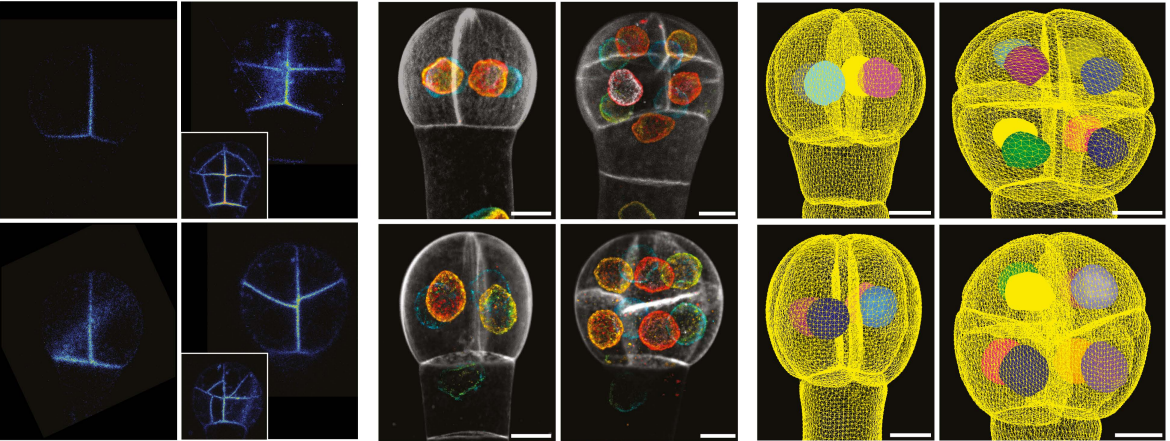
A molecular framework for control of oriented cell division in the Arabidopsis embryo
Prasad Vaddepalli, Thijs de Zeeuw, Soeren Strauss, Katharina Buerstenbinder, Che-Yang Liao, Richard Smith, Dolf Weijers
ARGONAUTE10 is required for cell fate specification and the control of formative cell divisions in the Arabidopsis root meristem
Nabila El Arbi, Ann-Kathrin Schürholz, Alexei Schiffner, Inés Hidalgo Prados, Friedrich Böhme, Christian Wenzl, Xinai Zhao, Jian Zeng, Jan U. Lohmann, Sebastian Wolf
Regulation of lateral root development by shoot-sensed far-red light via HY5 is nitrate-dependent and involves the NRT2.1 nitrate transporter
Kasper van Gelderen, Chiakai Kang, Peijin Li, Ronald Pierik
The Arabidopsis AAC Proteins CIL and CIA2 Are Sub-functionalized Paralogs involved in Chloroplast Development
Mingjiu Li, Hannes Ruwe, Michael Melzer, Astrid Junker, Götz Hensel, Henning Tschiersch, Serena Schwenkert, Sindy Chamas, Christian Schmitz-Linneweber, Thomas Börner, Nils Stein
Real-time conversion of tissue-scale mechanical forces into an interdigitated growth pattern
Samuel A. Belteton, Wenlong Li, Makoto Yanagisawa, Faezeh A. Hatam, Madeline I. Quinn, Margarete K. Szymanski, Mathew W. Marley, Joseph A. Turner, Daniel B. Szymanski
BREVIPEDICELLUS and ERECTA mediate expression of AtPRX17 in preventing Arabidopsis callus retardation and browning
Junyan Xie, Bin Qi, Yuanyuan Wu, Chenghong Mou, Lihua Wang, Yuwei Jiao, Yanhui Dou, Huiqiong Zheng
VAL genes regulate vegetative phase change via miR156-dependent and independent mechanisms
Jim P. Fouracre, Jia He, Victoria J. Chen, Simone Sidoli, R. Scott Poethig
CASP microdomain formation requires cross cell wall stabilization of domains and non-cell autonomous action of LOTR1
Andreas Kolbeck, Peter Marhavy, Damien De Bellis, Baohai Li, Takehiro Kamiya, Toru Fujiwara, Lothar Kalmbach, Niko Geldner
Repression by the Arabidopsis TOPLESS corepressor requires association with the core Mediator complex
Alexander R. Leydon, Wei Wang, Hardik P. Gala, Sabrina Gilmour, Samuel Juarez-Solis, Mollye L. Zahler, Joseph E. Zemke, Ning Zheng, Jennifer L. Nemhauser
Polarly localized receptor-like kinases PXC2 and IRK act redundantly during Arabidopsis root development in the radial axis
Jason Goff, Jaimie M. Van Norman
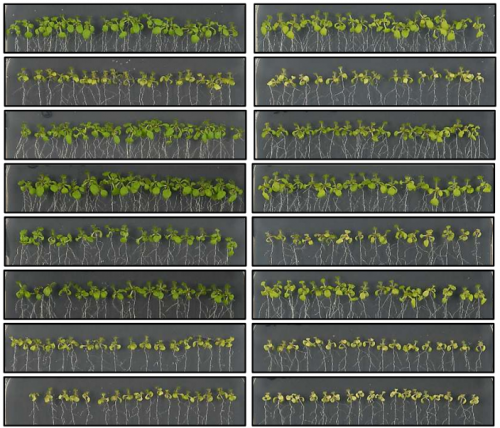
Root-to-shoot iron partitioning in Arabidopsis requires IRON-REGULATED TRANSPORTER1 (IRT1)
Julia Quintana, María I. Bernal, Marleen Scholle, Heike Holländer-Czytko, Nguyen Nga, Markus Piotrowski, David G. Mendoza-Cózatl, Michael J. Haydon, Ute Krämer
An HB40 – JUNGBRUNNEN1 – GA 2-OXIDASE regulatory module for gibberellin homeostasis in Arabidopsis
ShuChao Dong, Danuse Tarkowska, Mastoureh Sedaghatmehr, Maryna Molochko, Saurabh Gupta, Bernd Mueller-Roeber, Salma Balazadeh
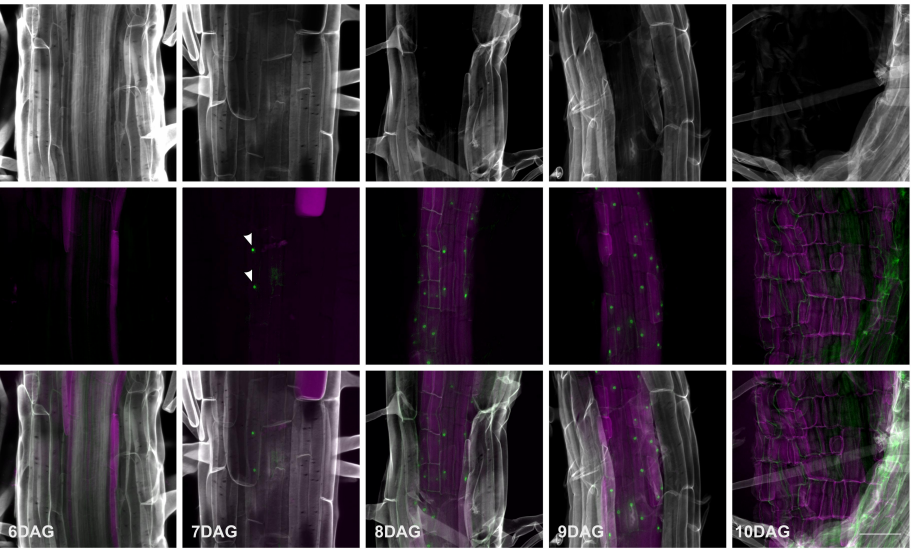
Phellem translational landscape throughout secondary development in Arabidopsis roots
Ana Rita Leal, Pedro Miguel Barros, Boris Parizot, Helena Sapeta, Nick Vangheluwe, Tonni Grube Andersen, Tom Beeckman, M. Margarida Oliveira
Estimation of differential cell cycle kinetics in higher plant root meristem with cellular fate and positional resolution
Taras Pasternak, Stefan Kircher, Klaus Palme
A novel positive feedback mechanism of ABI5 phosphorylation by mitogen activated protein kinase-3 regulates ABA signaling in Arabidopsis
Prakash Kumar Bhagat, Deepanjali Verma, Neetu Verma, Alok Krishna Sinha
Interplay between brassinosteroids and TORC signaling in Arabidopsis revealed by integrated multi-dimensional analysis
Christian Montes, Ching-Yi Liao, Trevor M Nolan, Gaoyuan Song, Natalie M Clark, Hongqing Guo, Diane C Bassham, Yanhai Yin, Justin W Walley
Chemical screen identifies a small molecule antagonizing JA-Ile perception and auxin responses
Andrea Chini, Isabel Monte, Gemma Fernández-Barbero, Marta Boter, Glenn Hicks, Natasha Raikhel, Roberto Solano
Disruption of the mitochondrial gene orf352 partially restores pollen development in cytoplasmic male sterile rice
Shiho Omukai, Shin-ich Arimura, Kinya Toriyama, Tomohiko Kazama
Characterization of novel regulatory modules controlling leaf angle in maize
Xianglan Wang, Xiaokun Wang, Shilei Sun, Xiaoyu Tu, Kande Lin, Lei Qin, Xingyun Wang, Gang Li, Silin Zhong, Pinghua Li
Subcellular dynamics studies reveal how tissue-specific distribution patterns of iron are established in developing wheat grains
Sadia Sheraz, Yongfang Wan, Eudri Venter, Shailender K Verma, Qing Xiong, Joshua Waites, James M Connorton, Peter R Shewry, Katie L Moore, Janneke Balk
ESD1 Affects Seed Setting Rate in Rice by Controlling Embryo Sac Development
Tiankang Wang, Yixing Li, Shufeng Song, Mudan Qiu, Licheng Zhang, Chengxia Li, Hao Dong, Lei Li, Jianlong Wang, Li Li
Tomato roots sense horizontal/vertical mechanical impedance and divergently modulate root/shoot metabolome
Alka Kumari, Sapana Nongmaithem, Sameera Devulapalli, Yellamaraju Sreelakshmi, Rameshwar Sharma
Genetic and gene expression analysis of flowering time regulation by light quality in lentil
Hai Ying Yuan, Carolyn T. Caron, Larissa Ramsay, Richard Fratini, Marcelino Pérez de la Vega, Albert Vandenberg, James L. Weller, Kirstin E. Bett
The making of cauliflowers: the story of unsuccessful flowers
Eugenio Azpeitia, Gabrielle Tichtinsky, Marie Le Masson, Antonio Serrano-Mislata, Veronica Gregis, Carlos Gimenez, Nathanaёl Prunet, Jérémy Lucas, Etienne Farcot, Martin M. Kater, Desmond Bradley, Francisco Madueño, Christophe Godin, Francois Parcy
Coordination between growth and stress responses by DELLA in the liverwort Marchantia polymorpha
Jorge Hernández-García, Rui Sun, Antonio Serrano-Mislata, Keisuke Inoue, Carlos Vargas-Chávez, David Esteve-Bruna, Vicent Arbona, Shohei Yamaoka, Ryuichi Nishihama, Takayuki Kohchi, Miguel A. Blázquez
The role of auxin and sugar signaling in dominance inhibition of inflorescence growth by fruit load
Marc Goetz, Maia Rabinovich, Harley M. Smith
Unraveling the role of MADS transcription factor complexes in apple tree dormancy using sequential DAP-seq
Vitor da Silveira Falavigna, Edouard Severing, Xuelei Lai, Joan Estevan, Isabelle Farrera, Veronique Hugouvieux, Luis Fernando Revers, Chloe Zubieta, George Coupland, Evelyne Costes, Fernando Andres
Apple ripening is controlled by a NAC transcription factor
Zoë Migicovsky, Trevor H. Yeats, Sophie Watts, Jun Song, Charles F. Forney, Karen Burgher-MacLellan, Daryl J. Somers, Yihi Gong, Zhaoqi Zhang, Julia Vrebalov, James G. Giovannoni, Jocelyn K. C. Rose, Sean Myles
Split-HaloTag® Imaging Assay for Sophisticated Microscopy of Protein-Protein Interactions in planta
Rieke Minner-Meinen, Jan-Niklas Weber, Andreas Albrecht, Rainer Matis, Maria Behnecke, Cindy Tietge, Stefan Frank, Jutta Schulze, Henrik Buschmann, Peter Jomo Walla, Ralf-R. Mendel, Robert Hänsch, David Kaufholdt
A robust method of nuclei isolation for single-cell RNA sequencing of solid tissues from the plant genus Populus
Daniel Conde, Paolo M. Triozzi, Kelly M. Balmant, Andria L. Doty, Mariza Miranda, Anthony Boullosa, Henry W. Schmidt, Wendell J. Pereira, Christopher Dervinis, Matias Kirst
An evolutionarily conserved coreceptor gene is essential for CLAVATA signaling in Marchantia polymorpha
Go Takahashi, Shigeyuki Betsuyaku, Natsuki Okuzumi, Tomohiro Kiyosue, Yuki Hirakawa
Evo-devo & evo
The Daphnia Carapace and the Origin of Novel Structures
Heather Bruce
A conserved paint box underlies color pattern diversity in Estrildid finches
Magdalena Hidalgo, Camille Curantz, Nicole Quenech’Du, Thanh-Lan Gluckman, Julia Neguer, Samantha Beck, Ammara Mohammad, Marie Manceau
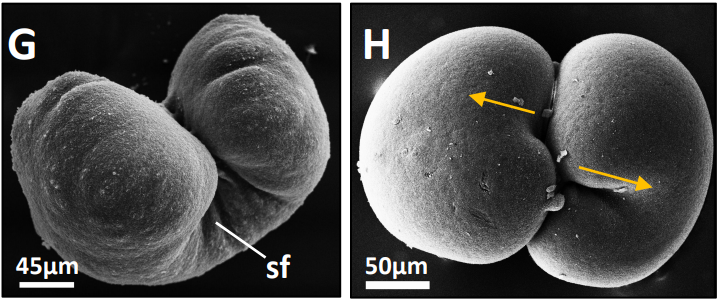
Apolar mode of gastrulation leads to the formation of polarized larva in a marine hydroid, Dynamena pumila
Alexandra A. Vetrova, Tatiana S. Lebedeva, Aleena A. Saidova, Daria M. Kupaeva, Yulia A. Kraus, Stanislav V. Kremnyov
Development of the foregut in Katharina tunicata (Mollusca; Polyplacophora)
Brandy S Biggar

Early embryogenesis and organogenesis in the annelid Owenia fusiformis
Allan Martín Carrillo-Baltodano, Océane Seudre, Kero Guynes, José María Martín-Durán
Ocular elongation and retraction in foveated reptiles
Ashley M. Rasys, Shana H. Pau, Katherine E. Irwin, Sherry Luo, Paul A. Trainor, Douglas B. Menke, James D. Lauderdale
Anterior eye development in the brown anole, Anolis sagrei
Ashley M. Rasys, Shana H. Pau, Katherine E. Irwin, Sherry Luo, Douglas B. Menke, James D. Lauderdale
Selection for increased tibia length in mice alters skull shape through parallel changes in developmental mechanisms
Colton M. Unger, Jay Devine, Benedikt Hallgrímsson, Campbell Rolian
Assessing evolutionary and developmental transcriptome dynamics in homologous cell types
Christian Feregrino, Patrick Tschopp
Pescoids and chimeras to probe early evo-devo in the fish Astyanax mexicanus
Jorge Torres-Paz, Sylvie Rétaux
The essential role of Dnmt1 in gametogenesis in the large milkweed bug Oncopeltus fasciatus
Joshua T. Washington, Katelyn R. Cavender, Ashley U. Amukamara, Elizabeth C. McKinney, Robert J. Schmitz, Patricia J. Moore
Two transcriptionally distinct pathways drive female development in a reptile with both genetic and temperature dependent sex determination
Sarah L. Whiteley, Clare E. Holleley, Susan Wagner, James Blackburn, Ira W. Deveson, Jennifer A. Marshall Graves, Arthur Georges
Differential gene regulation in DAPT-treated Hydra reveals molecular pathways dependent on Notch signalling during interstitial cell differentiation and formation of the oral-aboral axis in Hydra.
Angelika Böttger, Jasmin Moneer, Stefan Siebert, Stefan Krebs, Jack Cazet, Andrea Prexl, Qin Pan, Celina Juliano
β-Catenin and canonical Wnts control two separate pattern formation systems in Hydra: Insights from mathematical modelling
Moritz Mercker, Tobias Lengfeld, Stefanie Höger, Anja Tursch, Mark Lommel, Thomas W Holstein, Anna Marciniak-Czochra
Plasticity of body axis polarity in Hydra regeneration under constraints
Anton Livshits, Liora Garion, Yonit Maroudas-Sacks, Lital Shani-Zerbib, Kinneret Keren, Erez Braun
The expression of deep-sea fish visual genes supports a conserved cone-to-rod vertebrate retinal development
Nik Lupše, Fabio Cortesi, Marko Freese, Lasse Marohn, Jan-Dag Pohlman, Klaus Wysujack, Reinhold Hanel, Zuzana Musilova
Cardiopharyngeal deconstruction and ancestral tunicate sessility
A. Ferrández-Roldán, M. Fabregà-Torrus, G. Sánchez-Serna, E. Durán-Bello, M. Joaquín-Lluís, J. Garcia-Fernàndez, R. Albalat, C. Cañestro
An updated staging system for cephalochordate development: one table suits them all
João E. Carvalho, François Lahaye, Luok Wen Yong, Jenifer C. Croce, Hector Escrivá, Jr-Kai Yu, Michael Schubert
The color pattern inducing gene wingless is expressed in specific cell types of campaniform sensilla of a polka-dotted fruit fly, Drosophila guttifera
Masato Koseki, Nobuaki K. Tanaka, Shigeyuki Koshikawa
Large portion of essential genes is missed by screening either fly or beetle indicating unexpected diversity of insect gene function
Muhammad Salim Hakeemi, Salim Ansari, Matthias Teuscher, Matthias Weißkopf, Daniela Großmann, Tobias Kessel, Jürgen Dönitz, Janna Siemanowski, Xuebin Wan, Dorothea Schultheis, Manfred Frasch, Siegfried Roth, Michael Schoppmeier, Martin Klingler, Gregor Bucher
Return of a lost structure in the evolution of felid dentition revisited: A DevoEvo perspective on the irreversibility of evolution
Vincent J. Lynch
The evolution of the metazoan Toll receptor family and its expression during protostome development
Andrea Orús-Alcalde, Tsai-Ming Lu, Andreas Hejnol
Gene loss during the transition to multicellularity
Berenice Jiménez-Marín, Jessica B. Rakijas, Antariksh Tyagi, Aakash Pandey, Erik R. Hanschen, Jaden Anderson, Matthew G. Heffel, Thomas G. Platt, Bradley J. S. C. Olson
A conserved role of the duplicated Masculinizer gene in sex determination of the Mediterranean flour moth, Ephestia kuehniella
Sander Visser, Anna Voleníková, Petr Nguyen, Eveline C. Verhulst, František Marec
Living apart if you can – how genetically and developmentally controlled sex has shaped the evolution of liverworts
Xiaolan He, Jorge R. Flores, Yu Sun, John L. Bowman
TRNP1 sequence, function and regulation co-evolve with cortical folding in mammals
Zane Kliesmete, Lucas E. Wange, Beate Vieth, Miriam Esgleas, Jessica Radmer, Matthias Hülsmann, Johanna Geuder, Daniel Richter, Mari Ohnuki, Magdalena Götz, Ines Hellmann, Wolfgang Enard
New exon ignites accelerated evolution of placental gene Nrk in the ancestral lineage of eutherians
Guopeng Liu, Chunxiao Zhang, Yuting Wang, Guangyi Dai, Shu-Qun Liu, Wenshuai Wang, Yi-Hsuan Pan, Jianping Ding, Haipeng Li
Cell biology
The nanoscale organization of the Wnt signaling integrator Dishevelled in the development-essential vegetal cortex domain of an egg and early embryo
John H. Henson, Bakary Samasa, Charles B. Shuster, Athula H. Wikramanayake
Ciliary control of meiotic chromosomal pairing mechanics and germ cell morphogenesis
Avishag Mytils, Vineet Kumar, Qiu Tao, Rachael Deis, Karine Levy, Markus Masek, Hagai Eitan, Farouq Nather, Amal Shawahny, Ruxandra Bachmann-Gagescu, Sudipto Roy, Yaniv M. Elkouby
Tdrd3 regulates the progression of meiosis II through translational control of Emi2 mRNA in mouse oocytes
Natsumi Takei, Keisuke Sato, Yuki Takada, Rajan Iyyappan, Andrej Susor, Takehiro Yamamoto, Tomoya Kotani
KCTD19 associates with ZFP541 and HDAC1 and is required for meiotic exit in male mice
Seiya Oura, Takayuki Koyano, Chisato Kodera, Yuki Horisawa-Takada, Makoto Matsuyama, Kei-ichiro Ishiguro, Masahito Ikawa
Pumilio protects Xbp1 mRNA from regulated Ire1-dependent decay
Fatima Cairrao, Cristiana C Santos, Adrien Le Thomas, Scot Marsters, Avi Ashkenazi, Pedro M. Domingos
Sensory cilia act as a specialized venue for regulated EV biogenesis and signaling
Juan Wang, Inna A. Nikonorova, Malan Silva, Jonathon D. Walsh, Peter Tilton, Amanda Gu, Maureen M. Barr
Initial spindle positioning at the oocyte center protects against incorrect kinetochore-microtubule attachment and aneuploidy in mice
Jessica N. Kincade, Ahmed Z. Balboula
Mouse oocytes do not contain a conventional Balbiani body
Laasya Dhandapani, Marion Salzer, Juan M. Duran, Gabriele Zaffagnini, Cristian De Guirior, Maria Angeles Martínez-Zamora, Elvan Böke
A WDR35-dependent coatomer transports ciliary membrane proteins from the Golgi to the cilia
Tooba Quidwai, Emma A. Hall, Margaret A. Keighren, Weihua Leng, Petra Kiesel, Jonathan N. Wells, Laura C. Murphy, Joseph A. Marsh, Gaia Pigino, Pleasantine Mill
A novel adhesive complex at the base of intestinal microvilli
Christian Hartmann, Eva-Maria Thüring, Birgitta E. Michels, Denise Pajonczyk, Sophia Leußink, Lilo Greune, Frauke Brinkmann, Mark Glaesner-Ebnet, Eva Wardelmann, Thomas Zobel, M. Alexander Schmidt, Volker Gerke, Klaus Ebnet
Asymmetric Contraction of Adherens Junctions arises through RhoA and E-cadherin feedback
Kate E. Cavanaugh, Michael Staddon, Theresa A. Chmiel, Robert Harmon, Srikanth Budnar, Alpha S. Yap, Shiladitya Banerjee, Margaret L. Gardel
Biased removal and loading of centromeric histone H3 during reproduction underlies uniparental genome elimination
Mohan P.A. Marimuthu, Ravi Maruthachalam, Ramesh Bondada, Sundaram Kuppu, Ek-Han Tan, Anne Britt, Simon S.W. Chan, Luca Comai
Modelling
Cellular Reprogramming in Bursts and Phases
Bradly Alicea
Quantifying cell transitions in C. elegans with data-fitted landscape models
Elena Camacho-Aguilar, Aryeh Warmflash, David A. Rand
Turing’s diffusive threshold in random reaction-diffusion systems
Pierre A. Haas, Raymond E. Goldstein
Close to optimal cell sensing ensures the robustness of tissue differentiation process: the avian photoreceptor mosaic case
Arnab Barua, Alireza Beygi, Haralampos Hatzikirou
Effect of cellular rearrangement time delays on the rheology of vertex models for confluent tissues
Gonca Erdemci-Tandogan, M. Lisa Manning
Mechanistic models of cell-fate transitions from single-cell data
Gabriel Torregrosa, Jordi Garcia-Ojalvo
A mathematical modelling framework for the regulation of intra-cellular OCT4 in human pluripotent stem cells
L E Wadkin, S Orozco-Fuentes, I Neganova, M Lako, N G Parker, A Shukurov
Tools & resources
Cell Type Hierarchy Reconstruction via Reconciliation of Multi-resolution Cluster Tree
Minshi Peng, Brie Wamsley, Andrew Elkins, Daniel M Geschwind, Yuting Wei, Kathryn Roeder
A strategy to address dissociation-induced compositional and transcriptional bias for single-cell analysis of the human mammary gland
Lisa K. Engelbrecht, Alecia-Jane Twigger, Hilary M. Ganz, Christian J. Gabka, Andreas R. Bausch, Heiko Lickert, Michael Sterr, Ines Kunze, Walid T. Khaled, Christina H. Scheel
Characterization of Poldip2 knockout mice: avoiding incorrect gene targeting
Bernard Lassègue, Sandeep Kumar, Rohan Mandavilli, Keke Wang, Michelle Tsai, Dong-Won Kang, Marina S. Hernandes, Alejandra San Martín, Hanjoong Jo, W. Robert Taylor, Kathy K. Griendling
Identification of Maternal-Effect Genes in Zebrafish using Maternal Crispants
Cara E. Moravec, Gabriella C. Voit, Jarred Otterlee, Francisco Pelegri
Quantitative profiling of axonal guidance proteins during the differentiation of human neurospheres
Livia Goto-Silva, Michele Martins, Jimmy Rodriguez Murillo, Leticia Rocha, Gabriela Vitória, Júlia T. Oliveira, Juliana M. Nascimento, Erick Correia Loiola, Fabio C. S. Nogueira, Gilberto B. Domont, Marília Zaluar P. Guimarães, Fernanda Tovar-Moll, Steven Kastrup Rehen, Magno Junqueira
Real-time single-cell characterization of the eukaryotic transcription cycle reveals correlations between RNA initiation, elongation, and cleavage
Jonathan Liu, Donald Hansen, Elizabeth Eck, Yang Joon Kim, Meghan Turner, Simon Alamos, Hernan G. Garcia
Characterization of a novel Fgf10CreERT2 knock-in mouse line targeting postnatal lung Fgf10 lineages
Xuran Chu, Sara Taghizadeh, Ana Ivonne Vasquez-Armendariz, Susanne Herold, Lei Chong, Chengshui Chen, Jin-San Zhang, Elie El Agha, Saverio Bellusci
A functional genetic toolbox for human tissue-derived organoids
Dawei Sun, Lewis Evans, Kyungtae Lim, Emma L. Rawlins
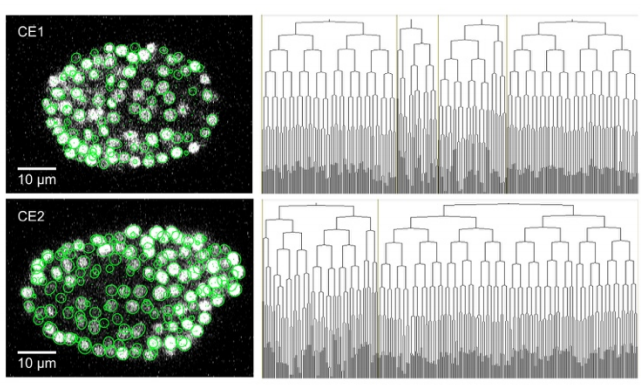
Tracking cell lineages in 3D by incremental deep learning
Ko Sugawara, Cagri Cevrim, Michalis Averof
Mechanical mapping of mammalian follicle development using Brillouin microscopy
Chii Jou Chan, Carlo Bevilacqua, Robert Prevedel
TAEL 2.0: An Improved Optogenetic Expression System for Zebrafish
Jesselynn LaBelle, Adela Ramos-Martinez, Kyle Shen, Laura B. Motta-Mena, Kevin H. Gardner, Stefan C. Materna, Stephanie Woo
Visualizing cellular and tissue ultrastructure using Ten-fold Robust Expansion Microscopy (TREx)
Hugo G.J. Damstra, Boaz Mohar, Mark Eddison, Anna Akhmanova, Lukas C. Kapitein, Paul W. Tillberg
An open-source experimental framework for automation of cell biology experiments
Pavel Katunin, Ashley J Cadby, Anton Nikolaev
Cas9 targeted enrichment of mobile elements using nanopore sequencing
Torrin L. McDonald, Weichen Zhou, Christopher Castro, Camille Mumm, Jessica A. Switzenberg, Ryan E. Mills, Alan P. Boyle
Linking Labs: Interconnecting Experimental Environments
Tanja Schultz, Felix Putze, Thorsten Fehr, Moritz Meier, Celeste Mason, Florian Ahrens, Manfred Herrmann
celldeath: a tool for detection of cell death in transmitted light microscopy images by deep learning-based visual recognition
Alejandro La Greca, Nelba Pérez, Sheila Castañeda, Paula Melania Milone, María Agustina Scarafía, Alan Miqueas Möbbs, Ariel Waisman, Lucía Moro, Gustavo Sevlever, Carlos Luzzani, Santiago Gabriel Miriuka
Visualizing endogenous RhoA activity with an improved localization-based, genetically encoded biosensor
Eike K. Mahlandt, Janine J. G. Arts, Werner J. van der Meer, Franka H. van der Linden, Simon Tol, Jaap D. van Buul, Theodorus W. J. Gadella Jr., Joachim Goedhart
Modeling gene expression evolution with EvoGeneX uncovers differences in evolution of species, organs and sexes
Soumitra Pal, Brian Oliver, Teresa M. Przytycka
Computational anatomy and geometric shape analysis enables analysis of complex craniofacial phenotypes in zebrafish mutants
Kelly M. Diamond, Sara M. Rolfe, Ronald Y. Kwon, A. Murat Maga
Modern tools for annotation of small genomes of non-model eukaryotes
Marina Galchenkova, Aleksei Korzhenkov
Reviews
Evolution of Multicellular Complexity in the Dictyostelid Social Amoebas
Koryu Kin and Pauline Schaap
The Endocannabinoid System and Invertebrate Neurodevelopment and Regeneration
Tristyn L. Clarke , Rachael L. Johnson ORCID logo , Jonathan J. Simone , Robert L. Carlone
CircRNA-Protein Interactions in Muscle Development and Diseases
Shuailong Zheng , Xujia Zhang , Emmanuel Odame , XiaoLi Xu , Yuan Chen , JiangFeng Ye , HeLin Zhou , Dinghui Dai , Bismark Kyei, Siyuan Zhan , Jiaxue Cao , jiazhong Guo , Tao Zhong , Linjie Wang, Li Li, Hongping Zhang
CRISPR/dCas9-based Systems: Mechanisms and Applications in Plant Sciences
Chou Khai Soong Karlson , Siti Nurfadhlina Mohd Noor , Nadja Nolte , Boon Chin Tan
Schrödinger’s “What is Life?” at 75
Rob Phillips
Research practice & education
Preprints in motion: tracking changes between posting and journal publication
Jessica K Polka, Gautam Dey, Máté Pálfy, Federico Nanni, Liam Brierley, Nicholas Fraser, Jonathon Alexis Coates
Life and work of researchers trapped in the COVID-19 pandemic vicious cycle
S. Aryan Ghaffarizadeh, S. Arman Ghaffarizadeh, Amir H. Behbahani, Mohammad Mehdizadeh, Alison Olechowski
National Institutes of Health Institute and Center Award Rates and Funding Disparities
Michael Lauer, Jamie Doyle, Joy Wang, Deepshikha Roychowdhury
Randomized controlled studies comparing traditional lectures versus online modules
Kiran Musunuru, Zarin P. Machanda, Lyon Qiao, William J. Anderson
A new approach to evaluate scientific production
Frank W. Pfrieger
‘Nepotistic journals’: a survey of biomedical journals
Alexandre Scanff, Florian Naudet, Ioana Cristea, David Moher, Dorothy V M Bishop, Clara Locher
So you want to be a Super Researcher?
Sanjay Rathee, Sheah Lin Lee


 (1 votes)
(1 votes)


 (12 votes)
(12 votes)











 (No Ratings Yet)
(No Ratings Yet)